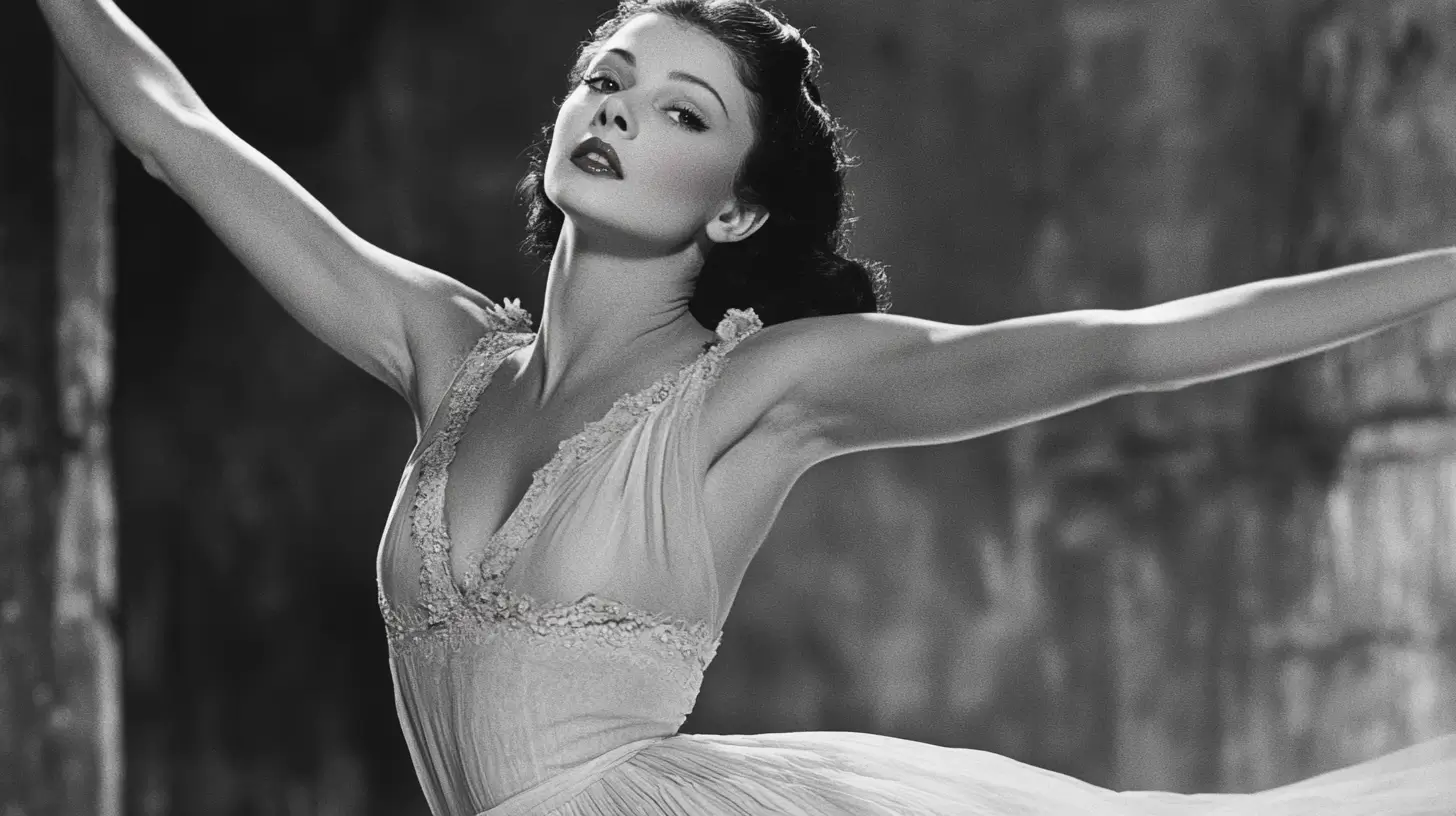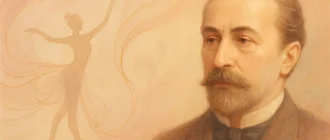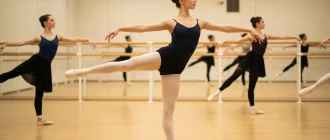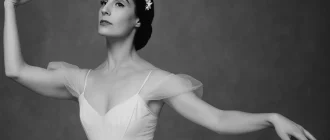One of the greatest ballerinas, Margot Fonteyn, left a lasting legacy in ballet. This article explores her early life, rise to fame, and iconic performances that defined her career. Learn about her famous partnership with Rudolf Nureyev and her enduring influence on dance.
Graceful Insights
- Her early training marked the beginning of Margot Fonteyn’s career in ballet, her rapid rise to prominence, and the receipt of significant accolades, including the title of Prima Ballerina Assoluta in 1951.
- Fonteyn’s collaborations with notable figures such as choreographer Sir Frederick Ashton and dancer Rudolf Nureyev were instrumental in her success, leading to some of the most celebrated performances in ballet history.
- The Margot Fonteyn International Ballet Competition, organized by the Royal Academy of Dance, continues to honor her legacy by fostering excellence among young ballet dancers and providing them opportunities to develop their skills and careers.
Art de Podcast
| Category | Details |
|---|---|
| Full Name | Dame Margaret Evelyn de Arias, known as Margot Fonteyn |
| Date of Birth | May 18, 1919 |
| Place of Birth | Reigate, Surrey, England |
| Early Training | She began ballet training at the age of four under Serafina Astafieva; later, she studied with Olga Preobrajenska and Mathilde Kschessinska in Paris |
| Professional Debut | Debuted with the Vic-Wells Ballet (later the Royal Ballet) in 1934 |
| Career Highlights | – Became Prima Ballerina Assoluta of The Royal Ballet in 1949 |
| – Renowned for her interpretations of classical roles in ballets like “Giselle,” “The Sleeping Beauty,” and “Swan Lake.” | |
| – Famous partnership with Rudolf Nureyev, starting with “Giselle” in 1962 | |
| – Her portrayal of Juliet in “Romeo and Juliet” (1965), choreographed by Kenneth MacMillan, was highly acclaimed | |
| Notable Roles | – Aurora in “The Sleeping Beauty” |
| – Giselle in “Giselle” | |
| – Odette/Odile in “Swan Lake” | |
| – Marguerite in “Marguerite and Armand” | |
| – Juliet in “Romeo and Juliet” | |
| Collaborations | – Frequent partner: Rudolf Nureyev; their chemistry on stage is legendary |
| – Worked with choreographers like Frederick Ashton, who created numerous roles for her, including “Ondine.” | |
| Awards and Honors | – Created Dame Commander of the Order of the British Empire (DBE) in 1956 |
| – Awarded the Order of Merit (OM) in 1979, one of the UK’s highest honors | |
| – Received the Queen Elizabeth II Coronation Award, the highest honor given by the Royal Academy of Dance | |
| Later Life and Legacy | – Retired from the stage in 1979 but continued to influence the world of ballet through teaching and public appearances |
| – Passed away on February 21, 1991 | |
| – Considered one of the greatest classical ballerinas of all time, her technique, artistry, and contributions to ballet continue to inspire dancers and choreographers | |
| Influence on Ballet | – Fonteyn’s legacy is preserved in her recorded performances and through the continued reverence for her most famous roles |
| – The Royal Ballet continues to honor her memory through revivals of ballets in which she starred | |
| – She is remembered for her grace, musicality, and unmatched dedication to her art |
This table captures the essence of Margot Fonteyn’s contributions to the ballet world, celebrating her as a quintessential Prima Ballerina who left an indelible mark on the art form.
The Life of Dame Margot Fonteyn
Born Margaret Evelyn Hookham on 18 May 1919 in Reigate, Surrey, England, Margot Fonteyn was destined for greatness from an early age. Her father, Felix John Hookham, was a mechanical engineer, and her mother, Hilda, introduced her to ballet lessons at the tender age of four. This early exposure to dance set the stage for a lifetime dedicated to ballet.
Initiating her formal ballet training in Shanghai, Margot was mentored by Russian expatriate dancer Georgy Goncharov. At the age of 14, she returned to London and joined the Vic-Wells Ballet School, making a notable impression quickly.
By 1935, she had succeeded Alicia Markova as the prima ballerina of the Vic-Wells Ballet, marking the beginning of her illustrious career. Her ability to gauge the style needed for each performance made her a standout at the Royal Opera House.
Fonteyn’s career was punctuated by significant accolades, including her 1951 decoration as a Commander of the Order of the British Empire. In 1979, the Royal Ballet honored her with the prestigious title of Prima Ballerina Assoluta, a testament to her unparalleled contribution to the dance world.
Despite facing personal challenges, including a brief stint in prison in Panama in 1959, Fonteyn’s legacy as a dancer remains untarnished.
Her marriage to Panamanian politician Roberto Arias in 1955 highlighted her intriguing personal life.
Rise to Fame in British Ballet
Margot Fonteyn’s journey to becoming a celebrated figure in British ballet began at the Vic-Wells School, where she was enrolled at the age of 14. Under the guidance of Ninette de Valois, Fonteyn was honed into a formidable dancer. Tamara Karsavina, her most impactful coach, significantly contributed to refining Fonteyn’s technique and artistry. During such pivotal years, she played a crucial role in shaping her future in the ballet world.
Fonteyn’s collaboration with Sir Frederick Ashton, a renowned choreographer, was instrumental in her rise to fame. Ashton created numerous roles for her, allowing Fonteyn to showcase her exceptional talent. Their work together included notable ballets such as Daphnis and Chloë (1951), Sylvia (1952), and Ondine (1958). These performances cemented her status as a leading ballerina and significantly contributed to the foundation of British ballet.
Her time at the Sadler’s Wells Ballet School, later known as the Royal Ballet, was marked by significant achievements and leading roles. Fonteyn’s ability to captivate audiences with her expressive performances and technical skills made her a beloved figure in the dance world.
Her solo debut and subsequent performances at the Royal Opera House showcased her as a prima ballerina of remarkable prowess.
Iconic Performances
![]()
Among Margot Fonteyn’s most iconic performances, her portrayal of Aurora in ‘The Sleeping Beauty’ stands out as a defining moment in her career. This role, which she performed during the Royal Ballet’s 1949 American tour, was highly acclaimed, demonstrating her technical precision and emotional depth. Fonteyn’s ability to embody the character of Aurora with grace and elegance made this one of her most memorable roles.
Equally significant was her performance as Juliet in Romeo and Juliet. Fonteyn’s portrayal of Juliet was noted for its dramatic intensity and lyrical beauty, capturing the hearts of audiences and critics alike. These performances and her many roles in Swan Lake and other ballets solidified her status as one of the greatest ballerinas of her time. Her ability to convey complex emotions through dance set her apart in the world of ballet.
The Nureyev Partnership
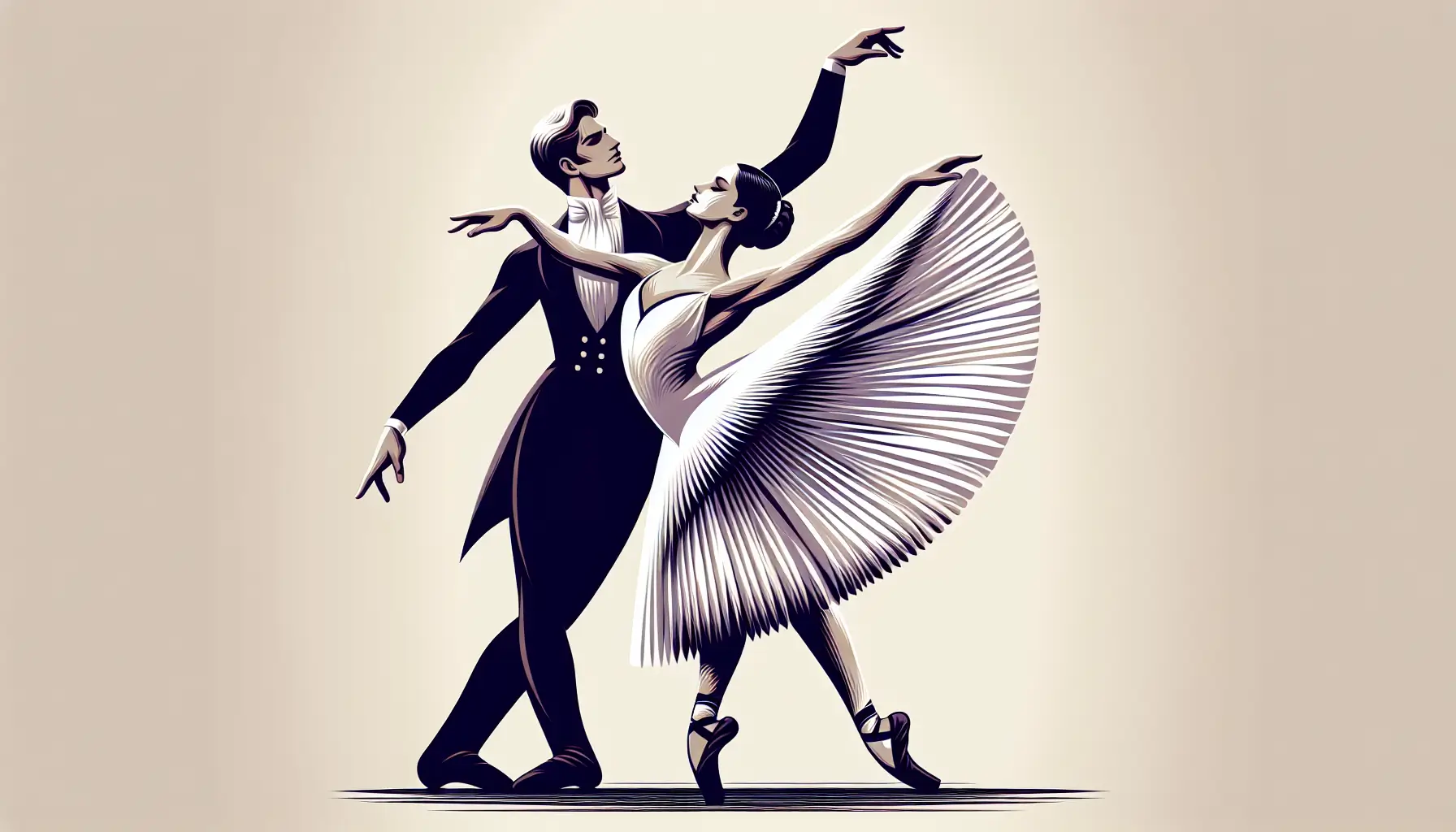
The legendary partnership between Margot Fonteyn and Rudolf Nureyev began in 1962, breathing new life into her career. At 42, Fonteyn was paired with the 23-year-old Nureyev, and together, they created magic on stage. Their collaboration, which began with their first performance in “Giselle” at Covent Garden, would go on to enchant audiences worldwide.
Their partnership was characterized by mutual respect and a shared dedication to excellence. They learned from each other, enhancing their performances and pushing the boundaries of ballet. Despite their many individual successes, Fonteyn and Nureyev regarded their work as some of their finest.
Their performances during the Nureyev years remain some of the most celebrated in the history of ballets created, contributing significantly to dance history.
Covent Garden Years
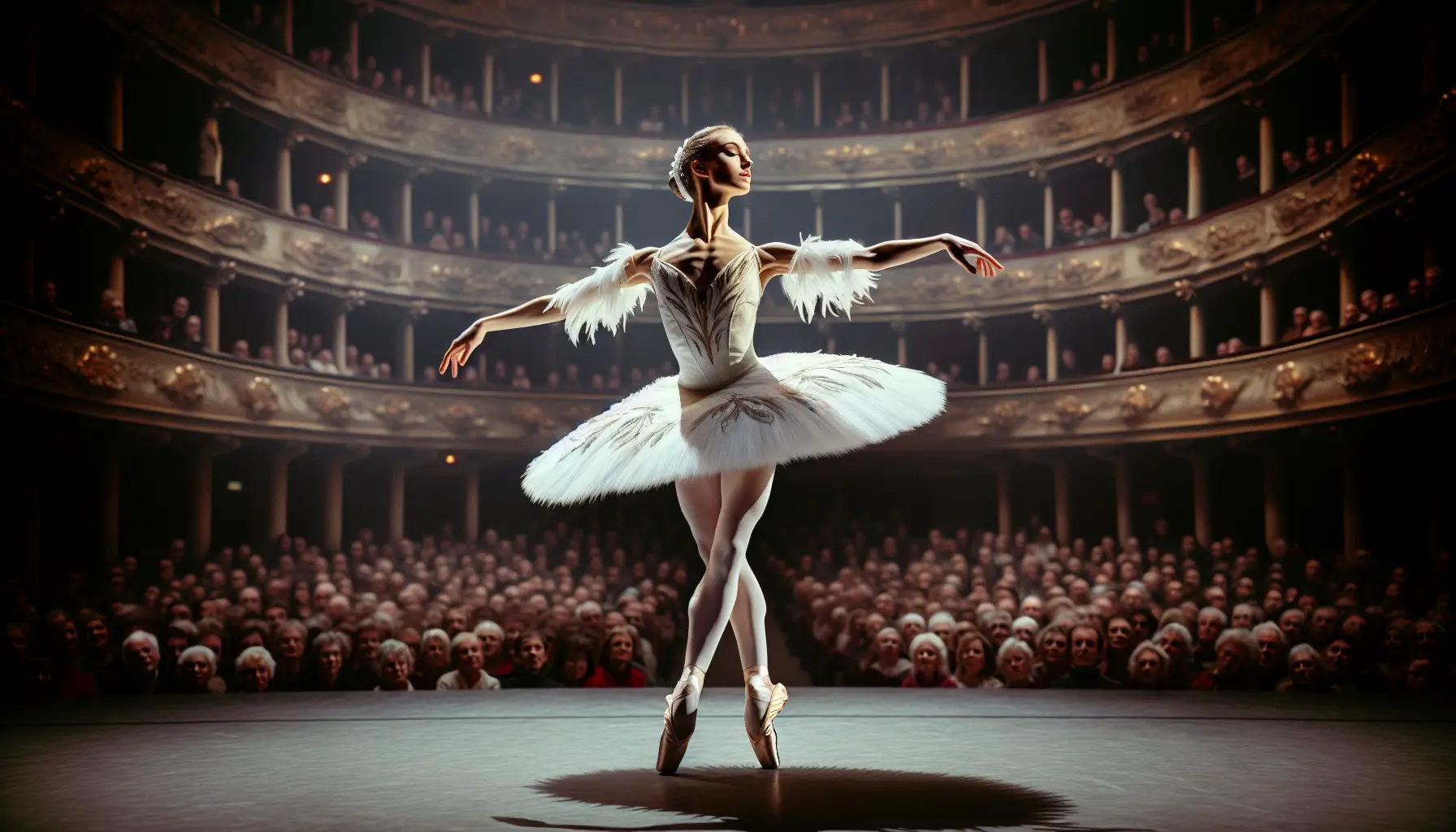
Margot Fonteyn’s years at Covent Garden were among the most celebrated of her career. Living in a flat at 118 Long Acre, she was a central figure at the Royal Opera House. Her performances in “Swan Lake” and “The Sleeping Beauty” were particularly noteworthy, showcasing her extraordinary talent and drawing rave reviews. These roles became synonymous with her name, and her ability to captivate audiences remained unmatched.
A performance to remember during her Covent Garden years was her 1965 rendition of ‘Romeo and Juliet,’ which was met with a standing ovation lasting 40 minutes and 43 curtain calls. Over her career, Fonteyn performed in over 80 roles across more than 40 years, many of which were at the Royal Opera House, Covent Garden. This period solidified her legacy as one of the greatest ballerinas of all time.
Final Performance and Retirement
Margot Fonteyn’s final performance as a dancer was in Rudolf Nureyev’s 1979 summer season, marking the end of an era.
Fonteyn made her last appearance dancing as the Queen in ‘The Sleeping Beauty’ in 1986, a role befitting a ballerina of her caliber. At 60, she bid farewell to her performing career, leaving a legacy to inspire future dancers.
In her retirement, Fonteyn retired:
- She moved to Panama with her husband, Roberto Arias
- Took up cattle farming and embraced a quieter life
- Despite being diagnosed with cancer in 1989, she remained resilient until her passing on 21 February 1991 in Panama City
- Her later years were marked by the continued support of her friend and dance partner, Rudolf Nureyev, who visited her regularly and helped with her medical bills.
The Margot Fonteyn International Ballet Competition
Organized by the Royal Academy of Dance, the Margot Fonteyn International Ballet Competition is a prestigious event committed to endorsing and honoring excellence among young ballet dancers worldwide. This competition begins with coaching days and culminates in a grand final at His Majesty’s Theatre in London, a testament to Fonteyn’s enduring legacy.
About the Competition
Candidates have a unique opportunity to collaborate with globally recognized choreographers and professionals during the competition. This platform refines their skills and prepares them for the challenging world of ballet as dancers. During the semi-finals, candidates perform a judged class on stage, a variation from the Classical Repertoire list, and a ‘Dancer’s Own’ piece, showcasing their versatility and creativity.
Bursary applications for The Fonteyn 2024 are now open, offering financial support to talented young dancers who aspire to participate in this prestigious event.
This initiative ensures that the competition remains accessible to a diverse range of candidates, fostering the next generation of ballet stars.
Last Year’s Highlights
The 2023 competition in New York marked a significant milestone as the first in-person event since the pandemic, attracting 79 candidates from around the world. One of the highlights was the newly choreographed piece, ‘Jeunesse,’ by The Royal Ballet’s first soloist, Valentino Zucchetti, performed by all the candidates. This piece showcased the young dancers’ technical prowess and artistic expression, leaving a lasting impression on the audience.
Competing for gold, silver, and bronze medals, including the Dame Margot Fonteyn Audience Choice Award, respected professionals evaluated the 12 finalists, Dame Darcey Bussell among them. The competition celebrated the achievements of these young dancers and highlighted the continuing influence of Fonteyn’s legacy.
How to Support
The sustenance of The Margot Fonteyn International Ballet Competition and its mission to promote excellence in ballet is heavily reliant on:
- Sponsors
- Donations
- Ticket sales
- Contestant fees
This support ensures that the competition can provide valuable opportunities to young male dancers and maintain its high standards.
Interested individuals and organizations can contact the Royal Academy of Dance to become supporters or sponsors. By contributing to this prestigious event, supporters help preserve Dame Margot Fonteyn’s legacy and foster the next generation of ballet talent.
| Feature | Description |
|---|---|
| Event Name | The Margot Fonteyn International Ballet Competition |
| Organizer | The Royal Academy of Dance (RAD) |
| Founded | 1931 (originally known as the Adeline Genée International Ballet Competition, renamed in honor of Dame Margot Fonteyn in 2019) |
| Location | The competition is held in various locations worldwide, with recent editions in London, Hong Kong, and other major cities. |
| Eligibility | Open to ballet dancers aged 15 to 20 who have passed the RAD Advanced 2 exam or hold an equivalent qualification. |
| Competition Format | The competition has three main stages: preliminary (video submission), Semi-finals (live), and Finals (live). |
| Judging Criteria | Technical proficiency, artistic expression, and overall performance quality are criteria for judging. |
| Prizes | Scholarships, monetary awards, and prestigious titles, such as the Margot Fonteyn Award. |
| Notable Alumni | The competition has included some of the world’s leading ballet dancers, including Steven McRae, Marianela Núñez, and Darcey Bussell. |
| Special Features | Participants receive masterclasses and coaching from world-renowned ballet professionals, providing invaluable experience and exposure. |
| Recent Developments | The competition has adapted to include virtual elements in response to the COVID-19 pandemic, enabling broader participation worldwide. |
| Cultural Impact | The competition is renowned for nurturing young talent, making significant contributions to the global ballet community, and shaping trends and standards. |
| Associated Events | The competition often includes gala performances, exhibitions, and opportunities for networking with industry professionals. |
Legacy and Honors
Dame Margot Fonteyn’s legacy is marked by numerous honors and accolades that reflect her extraordinary contributions to ballet. In 1956, she was made a Dame Commander of the Order of the British Empire, a prestigious recognition of her services to the art form. In 1979, Queen Elizabeth II appointed her Prima Ballerina Assoluta, further solidifying her status as one of the greatest dancers of her generation.
Fonteyn’s influence extended beyond the stage through her television performances, which introduced ballet to a broader audience. Her talent for engaging with viewers and conveying the beauty of ballet inspired countless budding dancers, ensuring her legacy will continue for future generations.
Resume
Margot Fonteyn’s life and career are a testament to her dedication, talent, and enduring impact on the world of ballet. From her early years of training under the guidance of esteemed mentors to her rise as a principal dancer at the Royal Ballet, Fonteyn’s journey was marked by iconic performances and groundbreaking partnerships. Her collaboration with Rudolf Nureyev and her celebrated performances at Covent Garden are highlights of a career that spanned more than four decades.
Her legacy continues through the Margot Fonteyn International Ballet Competition, which promotes excellence in young dancers and preserves her influence in the ballet world. Reflecting on her contributions, it is clear that Dame Margot Fonteyn’s story is one of passion, resilience, and an unwavering commitment to dance.
Frequently Asked Questions
When was Margot Fonteyn born?
Margot Fonteyn was born on 18 May 1919 in Reigate, Surrey, England.
What is the Margot Fonteyn International Ballet Competition?
The Margot Fonteyn International Ballet Competition is the Royal Academy of Dance’s annual event, which recognizes and celebrates the talent of young ballet dancers worldwide.
Who was Margot Fonteyn’s most famous dance partner?
Margot Fonteyn’s most famous dance partner was Rudolf Nureyev, with whom she formed a legendary partnership beginning in 1962.
What title did the Royal Ballet award to Margot Fonteyn?
Margot Fonteyn was awarded the title of Prima Ballerina Assoluta by the Royal Ballet in 1979, signifying her exceptional talent and contribution to ballet.
How can individuals support the Margot Fonteyn International Ballet Competition?
You can support the Margot Fonteyn International Ballet Competition through sponsorships, donations, ticket sales, and competitor fees by contacting the Royal Academy of Dance for more information.
What was Margot Fonteyn’s birth name, and why did she adopt a stage surname?
She was born Margaret Evelyn Hookham, but in her teens she and her mother searched telephone directories for a more theatrical form of her maternal family name Fontes. They settled on the antiquated spelling “Fonteyn,” which echoes the Old French word for “fountain” and gave her a distinctive professional identity.
How tall was Margot Fonteyn, and what was her approximate performance weight?
Contemporary accounts from colleagues describe her height as approximately 5 feet 4 inches (163 cm) with a working weight of around 115 pounds (52 kg), proportions considered petite even in mid-century ballet.
Where did she receive a formative part of her early ballet training outside the United Kingdom?
Between the ages of nine and fourteen, she lived in Shanghai, China, and studied with Russian émigré teacher Georgy Goncharov, whose emphasis on fluid, expressive upper-body work left a lasting imprint on her style.
Who was Georgy Gonchar, and how did he influence her technique?
Goncharov was a former Bolshoi dancer who fled post-revolutionary Russia and opened a studio in Shanghai. His Vaganova-influenced classes cultivated Fonteyn’s natural lyricism and encouraged the pliant back and épaulement that later distinguished her performances as Juliet and Ondine.
What does the surname “Fonteyn” actually mean?
“Fonteyn” derives from Old French fontaine, meaning “spring” or “fountain.” It is a topographic surname originally given to families living near a water source; variants include Fontaine, Fonteijn, and Fontyn.
When and where did Margot Fonteyn give her very last public performance?
Her final appearance on a stage came on 16 September 1988 in Mantua, Italy, dancing Baroque Pas de Trois with Rudolf Nureyev and Carla Fracci during the Maratona ”Festa a Corte.”
At what age did she retire from The Royal Ballet’s regular roster?
Fonteyn was formally celebrated as she left the Royal Ballet in 1979, at the age of 60, the same year Queen Elizabeth II confirmed her rank of Prima Ballerina Assoluta.
Which books did Margot Fonteyn publish after stepping back from full‑time dancing?
Among her two‑dozen titles are Margot Fonteyn: Autobiography, A Dancer’s World, The Magic of Dance, and retellings of ballets such as Swan Lake and Coppélia, all reflecting her mission to demystify classical dance for wider audiences.
What is the Dame Margot Fonteyn Scholarship Fund, and who does it support today?
The Scholarship Fund, administered by the Royal Academy of Dance, provides bursaries and audience‑choice prizes to promising competitors at the annual Fonteyn (formerly Genée) International Ballet Competition, ensuring that financial hurdles do not block emerging talent.
How did her regular television specials shape public perception of ballet?
In the 1950s and early ’60s, she fronted BBC and NBC broadcasts—including a live color Sleeping Beauty—bringing full-length classics into living rooms worldwide and proving that ballet could thrive on the small screen long before streaming.
What is the significance of the title “Prima Ballerina Assoluta” that she held?
“Prima Ballerina Assoluta” is an honorary rank reserved for dancers regarded as national treasures; only a handful received it in the 20th century. The 1979 elevation acknowledged her technique and her four‑decade contribution to establishing British ballet on the global stage.
Besides Rudolf Nureyev, which artistic collaborators were pivotal to her repertoire?
Sir Frederick Ashton created signature roles for her—including Ondine, Marguerite , and Armand—while partners such as Michael Somes and Robert Helpmann shaped her early Covent Garden seasons, giving her performances dramatic depth long before the Nureyev era.
How did marriage change her lifestyle without ending her career?
After marrying Panamanian diplomat Roberto Arias in 1955, she split her time between London engagements and a cattle ranch in Panama, funding her husband’s medical care after a 1964 assassination attempt by continuing international guest tours well past normal retirement age.
In what ways does the modern Fonteyn Competition embody her legacy?
The re‑branded competition mirrors her values by requiring classical and contemporary variations, encouraging versatility that Fonteyn herself championed, and offering coaching from Royal Ballet alums steeped in her tradition.
How is Margot Fonteyn remembered in today’s dance community?
More than thirty years after her death, dancers still study her filmed solos for phrasing, companies revive ballets she originated, and her archives inspire scholarship on British stagecraft—evidence that her artistry remains a touchstone for expressiveness in classical ballet.

